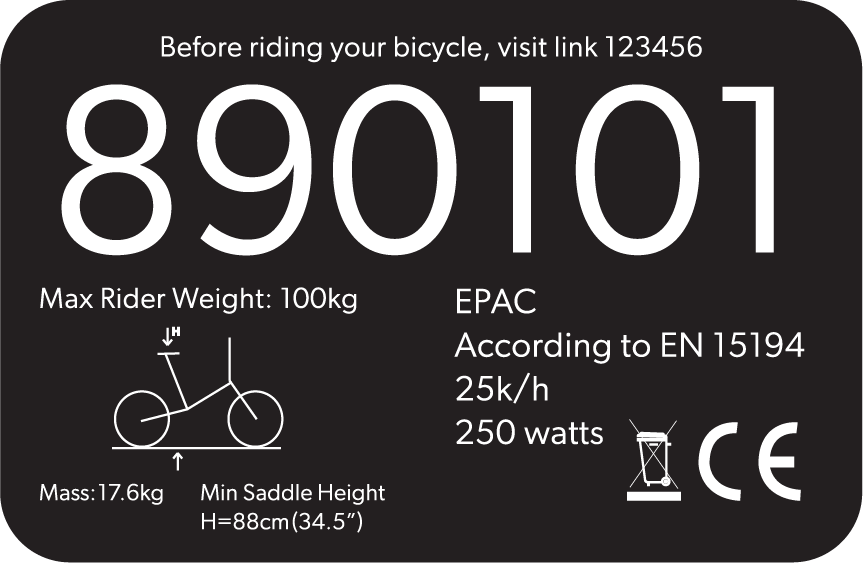
Electric bike rules
An electric bike, also known as an e-bike, is a type of vehicle and can be assisted by power when riding.
You can ride an e-bike on all Queensland roads and paths, except where bicycles are prohibited. When riding, you have rights and responsibilities like all road users.
Legal e-bike requirements
In order to legally ride an e-bike on public roads and footpaths, it must comply with the following:

Pedals are primary source of power
The motor provides assistance only

Motor assistance up to 25km/h
The bicycle can only be ridden faster under human power

Maximum continuous motor output 250 watts
The motor output should be printed on the compliance sticker
Illegal Devices
You can’t ride your device on a public road or footpath if it has any of the following:

Internal combustion engine
E-bikes must have an electric motor

Throttle powered only
Throttle power is permitted at speeds up to 6km/h to get started. After this you must pedal to activate the motor assistance

High powered motors
High-powered devices with a motor more than 250 watts are not permitted. High-powered devices that are locked to lower limits are still illegal
Penalties for illegal devices
Illegal devices are considered non-compliant motorcycles. They are already banned, and police can enforce them using a range of offences. Total fines can be more than $1640. *

More than $590
Unregistered Vehicle & Uninsured Vehicle.
Can be issued to the rider or a parent on behalf of a child

More than $500 + 3 demerit points
Not wearing a motorcycle helmet

More than $550
No motorcycle licence
Key rules to follow
E-bike riders must follow all general road rules just like all bicycle riders. This includes obeying signs and traffic lights as well as give way rules.
Always wear a helmet
Penalty of more than $160
Give way to pedestrians on paths
Penalty of more than $160
Leave your phone alone
Penalty of more than $1250
Only carry passengers if bike designed to do so
Penalty of more than $160
Obey give way & stop signs
Penalty of more than $500
Follow traffic lights
Penalty of more than $660
Don’t drink and ride
Penalty of more than $500
Ring your bell to warn pedestrians
Penalty of more than $160
No riding on motorways or where no bicycle signs are installed
Penalty of more than $190
Stay at the scene of a crash and exchange details
Penalty of more than $320
Speed limits apply
Look out for specific limits on paths and bridges. Penalty of more than $1,900
Do you need a licence or registration to ride an e-bike?
No. You don’t need a licence or registration to ride a legal e-bike. There is also no minimum age limit required to ride an e-bike.

